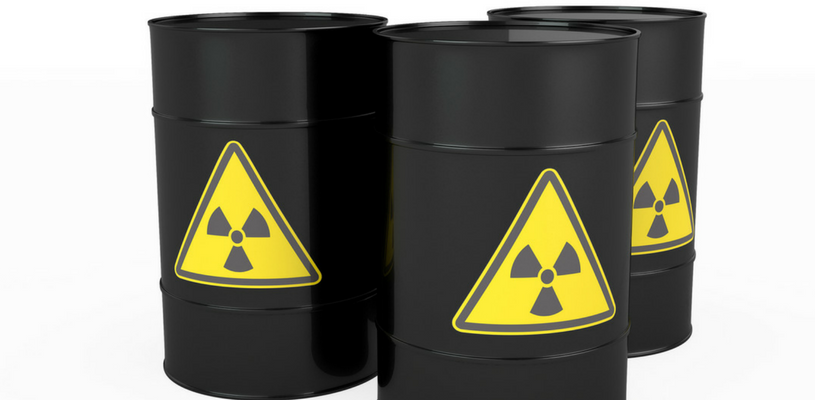Building a culture of prevention

In today’s organizations, strong leaders recognize that solid health and safety performance drives business results. They realize the importance of promoting a culture of health and safety in their organizations, integrating prevention measures into business strategies, processes, and performance measures.
Staying on top of emerging issues, trends, and understanding new regulations and legislation is paramount in building a culture of prevention. Understanding the nature of workplace injuries, as well as the occupations that are at highest risk, can help with both awareness and prevention.
The top five workplace injuries are as follows:
- musculoskeletal disorders (MSD) – 43%
- falls – 19%
- contact with/struck by – 14%
- exposures – 7%
- workplace violence – 4%
- motor vehicle incidents (MVI) – 4%
The top high-hazard occupations in municipalities are:
- EMS, police, firefighters – communicable diseases, MVI, MSD, workplace violence and aggression, traumatic events (PTSD)
- public works and maintenance labourers – MSD, work from heights, confined spaces, MVI, heavy equipment operations
- transit operators – MSD and MVI
- janitors/caretakers – MSD and slips, trips, and falls
- nurses and personal support workers in long-term care – MSD, including client handling and exposures
- waste management workers – exposure to biological and chemical agents and MSD
Notice that all of the above occupations have musculoskeletal disorders (MSD) as a top injury. Overall, the municipal sector is facing a number of factors that are contributing to the challenges of prevention: an aging workforce, growing workloads, shrinking budgets, and the demands for internal changes to process. These changes include legislative requirements that must be implemented, such as fall prevention, mandatory health and safety awareness training, and traffic protection.
The end results and the reality go far beyond just the human cost of death, injury, and the emotional cost. The average compensation cost of a claim for 2010 is estimated at over $20,000. The associated costs for a workplace injury could total three to 10 times that amount. These costs include:
- lost productivity and lost revenue;
- WSIB surcharges;
- ministry of labour fines; and
- administrative costs to manage the accident investigation, injury recovery, claims management, return to work, etc.
Furthermore, the physical, emotional, and financial costs to the worker may include:
- pain and suffering;
- income reduction and an uncertain future; and
- impact on families, friends, and the community
Emerging Issues
It is important to stay current and understand emerging health and safety issues that face employers and workers in today’s workplaces. Some of these are:
- fatigue;
- occupational disease;
- mental health;
- infection control; and
- construction/contractor safety.
Fatigue
Fatigue is state of feeling weary or sleepy resulting from insufficient sleep, prolonged mental or physical work, or extended periods of stress or anxiety. A fatigued worker’s risk of accident is 70 percent greater than other, non-fatigued workers. This risk of accident is even more likely for snorers with sleepiness on the job and those with chronic insomnia. Researchers are also finding that fatigue greatly impacts the health and wellness of the workforce. In fact, several studies have found that fatigue places people at increased risk of becoming obese, developing diabetes, developing breast cancer, and developing hypertension.1 Fatigue risk assessments help organizations to understand the risk fatigue is posing and to actively address it in the workplace.
Occupational disease
Occupational disease includes exposures to chemicals, noise, vibration, heat/cold, and asbestos over a long period of time that will cause long-term health effects. Public works, recreation, and building maintenance workers are exposed to various chemicals such as paints, water/wastewater treatment chemicals, ammonia, chlorine, etc. Many public service employees are exposed to noise and vibration if they work around or in equipment. Outdoor workers are exposed to temperature variations, including heat and cold. Many workers in public service work in buildings that also might contain asbestos.
Mental health
Mental health issues, including occupational stress injuries and depression, are a growing concern among workers. A particular focus is on high-stress professions like fire, police, and paramedics, where psychological health is as much a risk as physical health. Awareness and prevention have become priorities. The Public Services Health and Safety Association is working to implement the CSA National Standard of Canada for Psychological Health and Safety in the Workplace as a foundational step in assessing the risks within organizations and systematically addressing them. It is recommended that organizations integrate programs to address mental health into existing structures within a health and safety management system framework. (See the article by Monica Szabo in the October 2015 issue of Municipal World.)
Infection control
Outbreaks of infectious diseases over the past decade call attention to the urgency of emerging threats to worker health and safety. According to the Workplace Safety and Insurance Board (WSIB), an average of 1,000 workers are infected and become ill due to occupational exposure each year. Workers potentially exposed to infectious diseases are: health care/social services, child care, animal handlers, food services, cleaners/maintenance, wastewater operators, horticulture, law enforcement, paramedics, etc. Some of the infectious agents they are exposed to consist of: bacteria (legionnaires, tuberculosis), viruses (Ebola, West Nile, HIV, hepatitis), fungi (mould), and parasites (giardiasis, malaria, tapeworms, bedbugs, lice).
Construction/contractor safety
Due to a lack of internal resources, there is a need to tap into external expertise with contractors. However, there is still the same need and sense of urgency to protect employees, and legal compliance is crucial in order to reduce liability. Employers can implement contractor safety programs as an integral part of their overall health and safety management system. This will ensure procedures are in place during contract work and that both the purchaser and the buyer are aware of the key components within the contractor safety program. All elements should be captured early on in the request for quote to ensure health and safety as a shared approach.
Changing Landscape
There are emerging health and safety trends due to the changing legislative landscape. These changes will impact municipalities in a big way.
Staying on top of the emerging issues and understanding where changes are going to happen may require a health and safety consultant to partner with for your workplace health and safety program. Navigating the complexities and obtaining guidance will go a long way in assessing the gaps in your health and safety management system.
Whether it’s through strategic assessment, planning support, or help with tactical implementation, there are solutions available to make your workplace healthier and safer. An initial audit will help identify gaps and assist in prioritizing the tasks of managing health and safety. A top-down approach from leadership will help build a permanent culture, through understanding the values, attitudes, and beliefs that contribute to your organization’s health and safety environment. Ultimately, such efforts will result in more effective programs. MW
✯ Municipal World Insider and Executive Members: You might also be interested in the full version of this article or in Monica Szabor’s article: Laying a foundation for success: Solutions to prevent and manage the new wave of workplace health and safety issues. Note that you can now access the complete collection of past articles (and more) from your membership dashboard.
Jeff Pajot is a Consultant and Ergonomist with the Public Services Health and Safety Association representing Central-East Ontario. He has over 28 years of experience in health and safety across various sectors and organizations.
Related resource materials:



